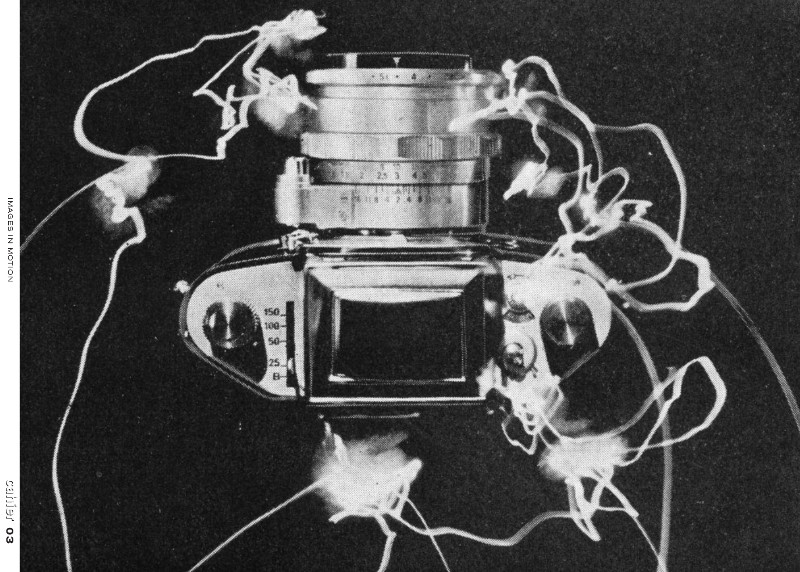Pavle Levi: Cinema by Other Means (2012–) [EN, SR]
Filed under book | Tags: · antifilm, art, art history, avant-garde, cinema, dada, experimental film, film, film history, film theory, lettrism, montage, structural film, surrealism, technology, yugoslavia

“Cinema by Other Means explores avant-garde endeavors to practice the cinema by using the materials and the techniques different from those commonly associated with the cinematographic apparatus. Using examples from both the historical and the post-war avant-garde — Dada, Surrealism, Lettrism, “structural-materialist” film, and more — Pavle Levi reveals a range of peculiar and imaginative ways in which filmmakers, artists, and writers have pondered and created, performed and transformed, the “movies” with or without directly grounding their work in the materials of film. The study considers artists and theorists from all over Europe — France, Italy, Soviet Union, Germany, Hungary — but it particularly foregrounds the context of the Yugoslav avant-garde. Cinema by Other Means offers the English-language reader a thorough explication of an assortment of distinctly Yugoslav artistic phenomena, such as the Zenithist cine-writings of the 1920s, the proto-structural Antifilm movement of the early 1960s, and the “ortho-dialectical” film-poetry of the 1970s.”
Publisher Oxford University Press, 2012
ISBN 019984142X, 9780199841424
224 pages
Reviews: Matilde Nardelli (Oxford Art Journal, 2013), Greg DeCuir (Jump Cut, 2013), Bojan Jovic (Biblid, 2013, SR).
Exh. review: De Cuir (ARTMargins, 2013).
Cinema by Other Means (English, 2012, updated on 2024-4-26)
Kino drugim sredstvima (Serbian, trans. Đorđe Tomić, 2013, added on 2024-4-26)
Ingrid Hoelzl, Friedrich Tietjen (eds.): Images in Motion: Cahier #3 (2012)
Filed under cahier | Tags: · chronophotography, cinema, film, film history, film theory, history of photography, image, photography, time

The aim of this Cahier is to bring together contributions that, induced by digitalization but not confined to digital images, explore historical and contemporary image practices that are situated beyond the habitual definitions of photography and film. The first part of the essays traces the pre-digital history of photography as a time-image in early photography (Timm Starl), the implications of using photographic images for proto-cinematic optical toys (Friedrich Tietjen) and Auguste Chevallier’s translation of panoramic images into a circular image which upsets traditional notions of photographic temporality as much as notions of the frame (Katja Müller-Helle). The second part explores the historical legacy of the digital “moving still” such as the freeze effect (Eivind Røssaak) employed in the blockbuster film The Matrix (1999) or the ubiquitous Ken Burns effect (Ingrid Hoelzl) used as a display feature in Apple iPhoto and other photo-software. It is preluded by a visual essay by Maarten Vanvolsem and Jonathan Shaw. The essay assembles and discusses their respective artistic practice in relation to their chronophotographic predecessors such as Bragagila—in the unusual format of the photographic still.
Publisher Luca School of Arts, Brussels, December 2012
ISBN 9789490049072
78 pages
via Academia.edu
R. Bruce Elder: Harmony and Dissent: Film and Avant-garde Art Movements in the Early Twentieth Century (2008)
Filed under book | Tags: · abstract cinema, art history, avant-garde, cinema, colour, constructivism, dissent, experimental film, film, film history, film theory, marxism, modernism, music, occultism, productivism, revolution, suprematism, symbolism, theology

“R. Bruce Elder argues that the authors of many of the manifestoes that announced in such lively ways the appearance of yet another artistic movement shared a common aspiration: they proposed to reformulate the visual, literary, and performing arts so that they might take on attributes of the cinema. The cinema, Elder argues, became, in the early decades of the twentieth century, a pivotal artistic force around which a remarkable variety and number of aesthetic forms took shape.
To demonstrate this, Elder begins with a wide-ranging discussion that opens up some broad topics concerning modernity’s cognitive (and perceptual) regime, with a view to establishing that a crisis within that regime engendered some peculiar, and highly questionable, epistemological beliefs and enthusiasms. Through this discussion, Elder advances the startling claim that a crisis of cognition precipitated by modernity engendered, by way of response, a peculiar sort of “pneumatic (spiritual) epistemology.” Elder then shows that early ideas of the cinema were strongly influenced by this pneumatic epistemology and uses this conception of the cinema to explain its pivotal role in shaping two key moments in early-twentieth-century art: the quest to bring forth a pure, “objectless” (non-representational) art and Russian Suprematism, Constructivism, and Productivism.”
Publisher Wilfrid Laurier University Press, Waterloo, 2008
ISBN 1554580285, 9781554580286
480 pages
Review: David Sterritt (Quarterly Review of Film and Video, 2011).
PDF (updated on 2019-12-14)
Comments (7)
